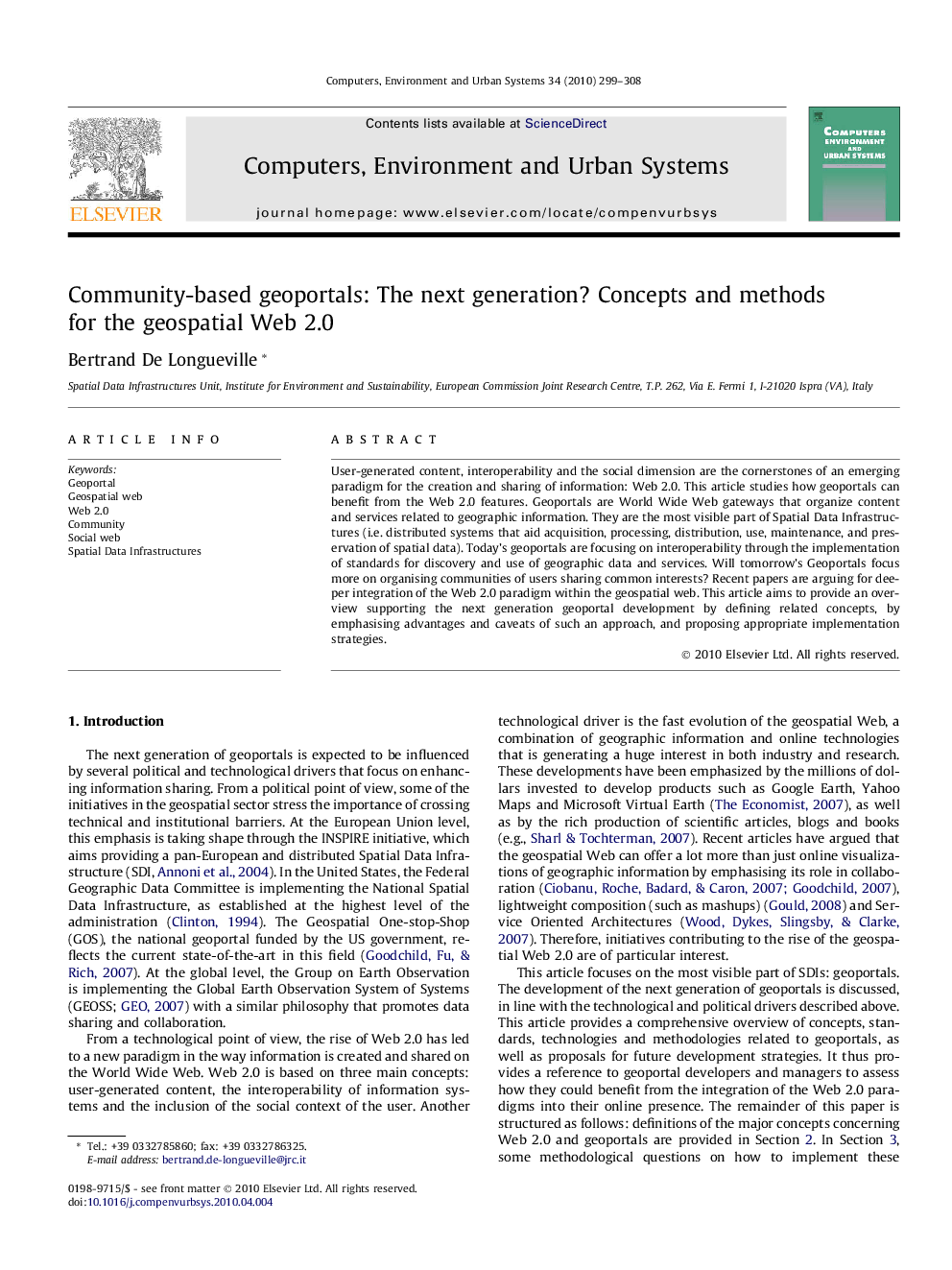| Article ID | Journal | Published Year | Pages | File Type |
|---|---|---|---|---|
| 506728 | Computers, Environment and Urban Systems | 2010 | 10 Pages |
User-generated content, interoperability and the social dimension are the cornerstones of an emerging paradigm for the creation and sharing of information: Web 2.0. This article studies how geoportals can benefit from the Web 2.0 features. Geoportals are World Wide Web gateways that organize content and services related to geographic information. They are the most visible part of Spatial Data Infrastructures (i.e. distributed systems that aid acquisition, processing, distribution, use, maintenance, and preservation of spatial data). Today’s geoportals are focusing on interoperability through the implementation of standards for discovery and use of geographic data and services. Will tomorrow’s Geoportals focus more on organising communities of users sharing common interests? Recent papers are arguing for deeper integration of the Web 2.0 paradigm within the geospatial web. This article aims to provide an overview supporting the next generation geoportal development by defining related concepts, by emphasising advantages and caveats of such an approach, and proposing appropriate implementation strategies.
